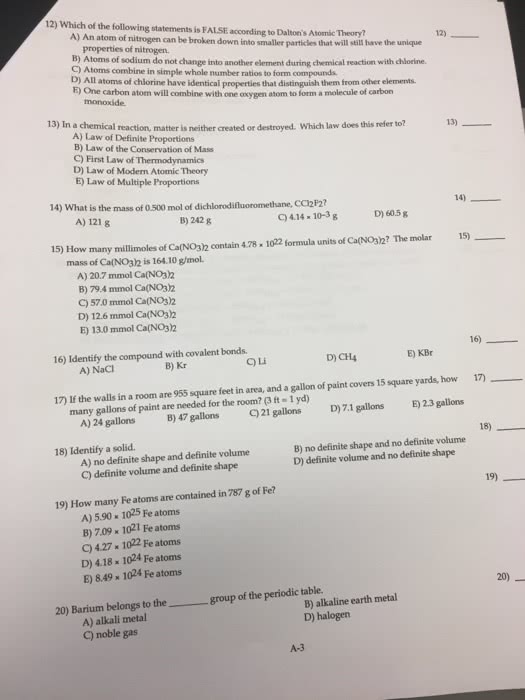CHEM 111A Chapter Notes - Chapter 2: Atomic Mass, Atomic Number, Electrochemical Cell
Document Summary
2. 3 modern atomic theory and the laws that led to it. The law of conservation of mass: in a chemical reaction, matter is neither created nor destroyed. The law of definite proportions: all samples of a given compound, regardless of their source or how they were prepared, have the same proportions of their constituent elements. Each element is composed of tiny, indestructible particles called atoms: 2. All atoms of a given element have the same mass and other properties that distinguish them from the atoms of other elements: 3. Atoms combine in simple, whole-number ratios to form compounds: 4. Atoms of one element cannot change into atoms of another element. In a chemical reaction, atoms only change the way that they are bound together with other atoms. Cathode the electrode in an electrochemical cell where reduction occurs; electrons flow toward the cathode. Electron a negatively charged, low mass particle present within all atoms.




